As many ask(ed), the blog might be the best to address your questions, about my new life @delair… And beyond.
As a student lately quoted to me, she expected airlines and airports to be on the forefront of technological development and integrated processes. She was surprised to find the truth being (mostly):
Nobody speaks with anybody.
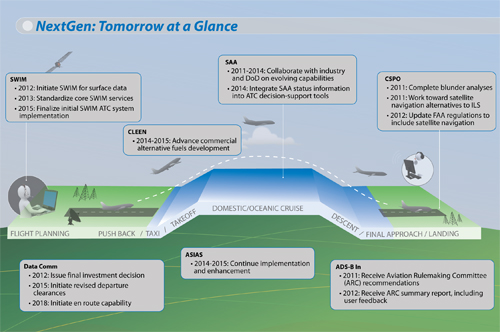
I have been aware of FAA NextGen before, but you may already see the shortcoming of it: It only addresses the time from a departure to the arrival at the airport…
Now A-CDM (theoretically) takes care of the processes from the arrival to the departure and starts to develop the concept of an integrated solution beyond the airport itself. A-CDM stands for Airport-Collaborative Decision Making. So the reality at most airports today is that the different companies servicing and serving the airport are communicating by telephone, fax, telex or other inefficient means with each other and the level of automatism at airports is simply devastating.
But this addresses two parts of a process, largely ignorant of the other. To solve this, the ANSPs (Air Navigation Service Providers) organizing the “air space” need to interface with the ground handling processes of the airports, involving airlines, ground handlers, government bodies, etc., etc.!
In reality, the two approaches should interface to each other in a collaborative approach too, so far, the ANSP pushes data to the airport: “Eat This”…

Airlines think in “rotations”, usually on a “weekly” basis. An aircraft takes off Monday Morning, flies all day to different airports, overnights, flies again, until it’s Sunday and the aircraft is back home where it started for another weekly rotation. And there are technicals (i.e. aircraft grounded due to engine failure or a warning light malfunction), weather (such as caused by an ice-rain or thunderstorm), or other operational delays, making the live of an airline network planner and the operations control center (airline department trying to cover the afore-mentioned problems) not any easier. Now add the complexity of inefficient ground handling processes and air traffic control and you wonder that any flight takes off “on-time”…
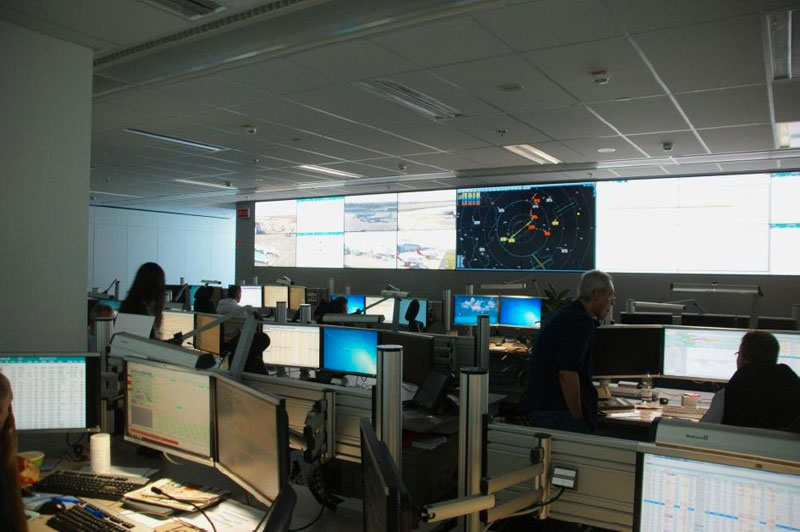 As my first “job” in delair, I happened to be at the Dusseldorf Airport Control Center (ACC), where the airport created an operations center, bringing together intentionally the different stakeholders in the ground-handling process, being the airport’s own departments, the airlines, ground-handlers, but also the government bodies – not the ANSP (yet) I am afraid. And with a worldwide unique tool by delair, they not only react “on-the-fly” to the operational situation, but the software forecasts the traffic development for the next 12 hours (arosa PMS, Performance Management System). Enabling the ACC to see bottlenecks before they hit them and take pro-active counter-measures to minimize their impact or even avoid such completely. At all other airports, these bottlenecks are handled, when it hits you in the neck. Not very professional in my eyes. Predictive chaotic and uncontrolled situations is the opposite of situational awareness and it adds to the incurring delay.
As my first “job” in delair, I happened to be at the Dusseldorf Airport Control Center (ACC), where the airport created an operations center, bringing together intentionally the different stakeholders in the ground-handling process, being the airport’s own departments, the airlines, ground-handlers, but also the government bodies – not the ANSP (yet) I am afraid. And with a worldwide unique tool by delair, they not only react “on-the-fly” to the operational situation, but the software forecasts the traffic development for the next 12 hours (arosa PMS, Performance Management System). Enabling the ACC to see bottlenecks before they hit them and take pro-active counter-measures to minimize their impact or even avoid such completely. At all other airports, these bottlenecks are handled, when it hits you in the neck. Not very professional in my eyes. Predictive chaotic and uncontrolled situations is the opposite of situational awareness and it adds to the incurring delay.
Example: If the country faces heavy snow, the de-icing process reduces the airport’s capacity to take aircraft into the air. If you see that coming, you may be aware hours before, that you will have to cancel at least 50% of your flights. But which ones? In the current environment at most airports, it is ad-hoc decisions. In a controlled “predicted” situation, the airlines may select a short-haul return-connection to be cancelled, but a flight where the aircraft is needed at the destination airport to be prioritized. Say the airport needs to run with 50% reduced capacity for three hours – predicted two hours before. To have the shuttle flight leaving to the nearby airport, likely to face same weather problems, does not make sense. The flight to the (warm) South though, does make sense, as until it comes back, the weather should be back to normal…

[Updated: Link to presentation added]
Keep in mind, thinking about this dilemma: Only an aircraft that flies makes money. Cancel the flight and see your hardly accumulated profit margins evaporate like butter in the summer midday sun! By paying passengers compensations applied by government legislations beyond reasonable scope. Sure the airline calculates such into their prices. Making tickets more expensive. An airline looses not only by less flying in winter, but a large sum by paying for cancellations and delays resulting from bad operational support from airports and ANSPs. And so far, the airline pays. Though I heard of first examples, where the airline sues the airport or ANSP for inefficiency-caused expense. Though even those cases do not claim the cost on the entire rotation, but on the individual flight. So far. I truly believe that will change soon!
All that more or less nice and smooth so far, right…? It does not help anything, as long as the ANSPs stay out of the development loop or develop their own ideas without any “collaborative” approach. Sure, there are people there who do think beyond their own, but the feedback I got during the last months shows an extreme level of neglect of the overall situation. Go back to the airline rotation… I could cry.
Consider the weather situation again… Thanks to the snow-storm, several routes have airborne capacity problems. As have the destination airports. But the approach is always local! Even Dusseldorf is largely unaware of the situation in the airspace or at the destinations. As the ANSPs remain ignorant of the needs of the airlines, airports or the rotations. They get the aircraft delivered to the runway and then we face a break. Good luck… And given the weather: The ANSP will handle the flight, no matter if the destination airport can handle it back. So aircraft may be brought in to an airport, when it would be reasonably known that the airport will close soon due to weather development. Ignorance instead of situational awareness! And another likely break in the rotation of that aircraft, causing a ripple down the line.
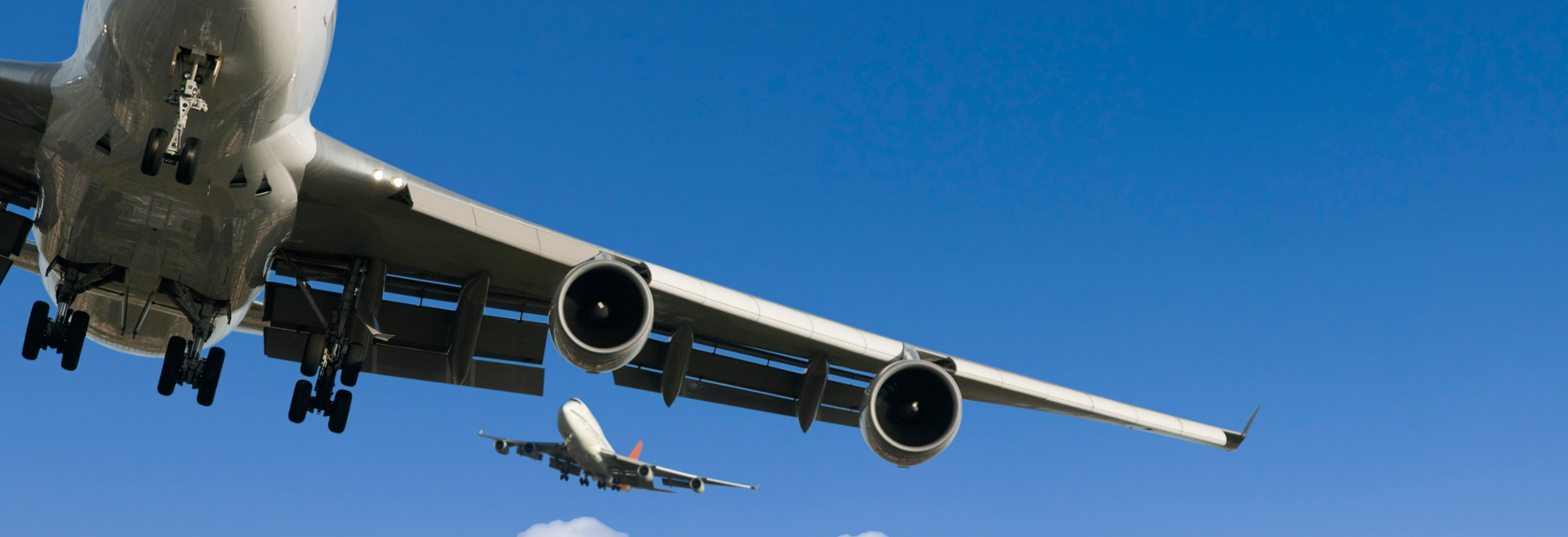
So after that introduction, a quick excursion to my new world (as the blog topic of the day)… As mentioned, A-CDM defines the ground-based process enhancements. The “arrival manager” (AMAN, mostly on the ANSP-side) organized the delivery of incoming aircraft, prioritizing the runway capacity – unfortunately, largely unaware of the airport’s capacity or processes. Based on the scheduled and planned arrival information, the airport now struggles to handle the ground-based processes. From organizing the Follow-Me-vehicles, to deciding where to park the aircraft (stand), could be at the gate or on the apron with bus-transfer, mobile staircase and additional time needed for transfer apron-terminal (and back out). Oh yes, and the airport and ground handlers usually have a limited number of “bridged” gates where the aircraft stand is right at the terminal, limited number of staircase-vehicles, follow-me’s, busses, etc. At Erfurt Airport, there are four gaterooms (and four aircraft stands at the terminal), but only one baggage belt. So you better schedule your arrivals to not have four aircraft like A320s arriving within 30 minutes… Luckily, they don’t have the traffic to use A-CDM or need it, but it is the same at many larger airports that such bottlenecks exist.
So you also manage the baggage belt, staff rosters to assure you not only have the technology, but also the people to do the job. And the customs/immigration counters (and staff) to manage the arriving aircraft.
Ignoring the idea (just here in the blog, not in reality) to taxi the aircraft to maintenance or park it for overnight or … we then go into the “outbound process”. The passengers want to check-in, so you allocate the check-in-counters. As well as you need to make sure, you have the aircraft positioned to a fitting gate – there are usually domestic and international ones (where for the sake of ease, I do consider “Schengen” as “domestic” in the process). So you send the passengers to the gates. And you better understand that airports mostly do not make much income on the flight handling, today they make money on the “non-aviation-business”, such as the shops between check-in and aircraft. You need to manage the lounges, assure the border security, baggage control and passenger screening to be efficient. See my article about Check-in 2015 for ideas on that…
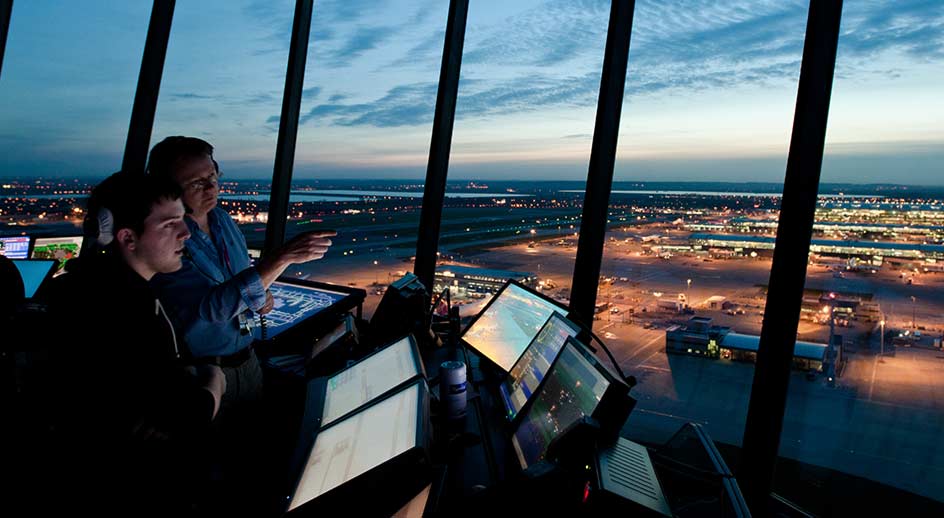 Then another fun part comes… They are in time checked-in, they are at the gate. But due to ATC-constraints, there is no slot. There might be one at your airport, but at the destination…? Do you board the passengers and stick them into the plane if you know there’s a 30 minute delay? Very likely, if the delay is at the remote airport, you will… Thank you. If it is at your airport and they use A-CDM and a “Departure Manager” (DMAN), they do organize the departure based on the runway capacity. Did I mention that usually a runway is not used for departures only? Sorry, aircraft also arrives and uses capacity… But I only know of one working AMAN/DMAN combination in use. And you do need to consider not only the ATC-slot of the aircraft, but now need to take into account parameters such as taxi-times, maybe de-icing, the flow of aircraft on the taxi-way (you don’t like to have an outgoing aircraft on the same taxiway of an opposite directed incoming one)…
Then another fun part comes… They are in time checked-in, they are at the gate. But due to ATC-constraints, there is no slot. There might be one at your airport, but at the destination…? Do you board the passengers and stick them into the plane if you know there’s a 30 minute delay? Very likely, if the delay is at the remote airport, you will… Thank you. If it is at your airport and they use A-CDM and a “Departure Manager” (DMAN), they do organize the departure based on the runway capacity. Did I mention that usually a runway is not used for departures only? Sorry, aircraft also arrives and uses capacity… But I only know of one working AMAN/DMAN combination in use. And you do need to consider not only the ATC-slot of the aircraft, but now need to take into account parameters such as taxi-times, maybe de-icing, the flow of aircraft on the taxi-way (you don’t like to have an outgoing aircraft on the same taxiway of an opposite directed incoming one)…
So considering all that data, based on the ATC-slot, you specify the TOBT and the TSAT, the “targeted off-block-time” and the “targeted (engine) start-up-time”… Then you deliver the aircraft to the runway and … pray.
What is my scenario for an efficient operation of air services?
Yeah, right… First of all, the ANSPs need to harmonize their problems. Because in most economies (maybe not that much in North America), there are a number of national ANSPs and there are projects to work with “block spaces”, which is another way of a work-around to inefficiencies… An optimized process should not start with the ANSP or the airport or the ground handler, but with the airline. What does it help the airline to have a “slot” at an airport, if it does not fit the rotation needs. Or if the airline must calculate a “planned delay” in the process as the aircraft will not be efficiently “turned around”, but handled on the apron instead of the gate, as the airport sold beyond capacity. Or worse, held in holding pattern on approach due to excessive demand. And every winter, you add the weather problems, that sure take everyone by surprise… Again…
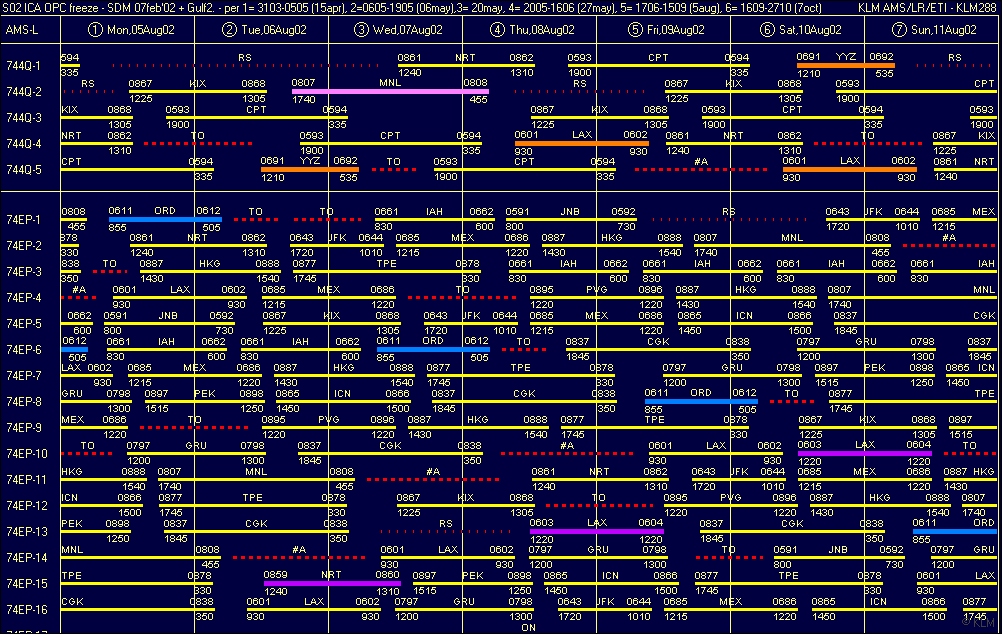
Why IATA does handle “slot conferences“, but does not address a neutral slot optimization for complete rotations is simply beyond me. Yes, it is complex, but using flight plan data, IATA could develop software to suggest improvements to slots for all involved airlines at a neutral level, taking the rotation as a basis and not – as is today – an individual flight! Today, the airline as the operator struggles to match the available slots to their aircraft operational planning on rotations basis. A common complain by airports is, that airlines have slots assigned, but the aircraft is always early or late, interfering with slots assigned to other airlines. To call that efficient? And the reason is known as soon as you have a closer look: The rotation. A “planned” difference from the assigned slot… Because the “needed” slot wasn’t offered…
Ahh, isn’t the “buzz-word” at the moment in IT? Big Data…
You cannot do such a cross-airline rotation based slot optimization by hand. And rotation may include the airline’s wish to meet certain “waves”, the transfer-windows at hub airports. But I believe, IATA could and should invest into a solution that takes the rotation planning into account and enable improvements to capacity. And the airports should not consider capacity only on the maximum good-weather capacity and wishful thinking, but they should consider bad weather and make contingency plans together with the airlines in the early stage – if flights are being cancelled frequently, the business traveler will reject them as unsave and plan pro-actively on alternate transportation – with severe impact to the airline’s financial calculations. And the airline will be faced with the compensation to the customers and the missing profit from the flight! So at this time, the “looser” is (and remains) the airline. But I heard in the last A-CDM task force meetings, only one airline attended. Which I believe is the cause of the dilemma. You got to involve yourself as an airline and voice your needs. Another nice example by Dusseldorf. Air Berlin as a key stakeholder (hub carrier) at Dusseldorf, has been a key driver in the ACC’s development there. But talking to Route Planners at many large airlines, there is neither “vision”, nor “concept”, that and how the dilemma can be solved. And without receiving the necessary top-level corporate support, this is likely to stay as is. A planned (and accepted) inefficiency.
Yeah, I hope, I trigger quite some (controversial) feedback with this blog post, as yes, such can only scratch on the surface of things. Or cut deep on a single aspect, though there is a whole picture out there. I know the complexities of route (rotation) planning, as I know unmentioned complexities at airports and ANSPs. But
Food For Thought
Comments welcome
![“Our Heads Are Round so our Thoughts Can Change Direction” [Francis Picabia]](https://foodforthought.barthel.eu/wp-content/uploads/2021/10/Picabia-Francis-Round-Heads.jpg)